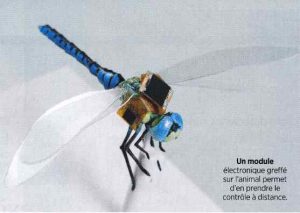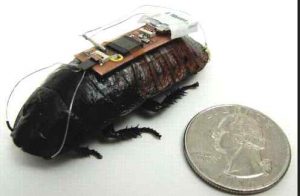Useless but really impressive!
Brain decoder for your inner voice

As you read this, your neurons are firing – that brain activity can now be decoded to reveal the silent words in your head…
The team found that certain neurons in the brain’s temporal lobe were only active in response to certain aspects of sound, such as a specific frequency. One set of neurons might only react to sound waves that had a frequency of 1000 hertz, for example, while another set only cares about those at 2000 hertz. Armed with this knowledge, the team built an algorithm…
It’s an already old article but still very good to read HERE.
What is Blockchain (Bitcoin etc…)
 This is a article from the blog CoinCentral (with their authorization).
This is a article from the blog CoinCentral (with their authorization).
What is blockchain?
Simply put, a blockchain is just a list of digital records (blocks) that are chained together using cryptography.
The financial industry today contains all types of middlemen – payments processors, banks, and credit card companies are just a few. These intermediaries help to establish trust between buyers and sellers and ensure the accuracy of data in the transactions. However, adding additional people and steps to the process oftentimes leads to cost increases and reductions in speed.
Enter blockchain. This technology eliminates the need for middlemen by providing a decentralized, trustless ledger system with little exposure to fraud. Bitcoin is the most famous example.
Although you primarily hear about the financial sector’s use of blockchain, the technology expands far beyond just simple transactions. Blockchain companies are disrupting tons of industries from data storage and supply chain to gambling and the Internet of Things.
How does blockchain work?
Nodes
A blockchain is run by a large network of computers, called nodes. These computers validate and record transaction data on the network by solving complex mathematical algorithms.
Every node has a complete history of transactions, so if one were to try and maliciously change a record, the entire network would know and reject the change.
Transaction example
Bob wants to send Sally $5, so he submits his transaction to the blockchain. Every node in the network then receives his transaction request.
Each node checks for two things with the transaction data:
- That Bob is who he says he is
- That Bob has the $5 to send to Sally
First, the nodes check Bob’s identity using the private key that he provides. A private key is an ownership tool that identifies a source of funds.
Next, the nodes make sure Bob isn’t trying to spend money that he doesn’t have. Because the nodes all have a copy of the ledger of transactions, they can easily check whether or not Bob has the $5 that he’s trying to send.
If at least 51% of the nodes agree that Bob’s identity is truthful and he has enough money to send, then the transaction will go through. The nodes will also update the ledger on the network with the new transaction.
With each new transaction added to the chain, the previous transactions become harder and harder to manipulate.
This immutability is supported by hash pointers. A hash pointer is a cryptographic hash that refers to the previous data block in the chain. They allow you to confirm that no one has tampered with earlier transaction blocks.
A transaction becomes like a fly trapped in amber. You would need to remove each additional block (layer of amber) from the chain to access and manipulate the previous transaction data (the fly).
The benefits of blockchain
Faster
Cutting out the middleman shortens the process of transactions and data transfer. Validations are inherently built into a blockchain system, so there’s no need for lengthy approvals or complicated record checks.
Cheaper
As mentioned earlier, the more people and entities involved in a process, the more costly it becomes. The cost of running a blockchain network is far less than an intermediary doing the same job.
More accurate
Data on the blockchain is immutable and validated by mathematical computations. It’s nearly impossible to have any human error and/or fraud.
Blockchain TL;DR – Final Thoughts
A blockchain is a distributed ledger system that uses cryptography to link together bits of data. It removes the need for middlemen in transactions which leads to faster processes, reduced costs, and greater data accuracy.
Go further:
The living robot
WHAT
We can nowadays remotely control a living dragonfly by connecting on its nervous system an electronic device embarked on its back.
WHY
 I read some days ago an article1 which struck me a bit. This made me feel like: “Hey! In the big family of the new technologies which take place in between the alive world and the mechanical one, here is a newcomer!”. The basic idea is to remotely control a dragonfly. A real one?! (“WTF, you’re a dragonfly and you don’t fly where you want to?”). The objectives shown by the Draper company, at the origin of the project with the Howard Hugues Medical Institute, are the participation in operations of surveillance, the transport of light loads and the pollination of cultures.
I read some days ago an article1 which struck me a bit. This made me feel like: “Hey! In the big family of the new technologies which take place in between the alive world and the mechanical one, here is a newcomer!”. The basic idea is to remotely control a dragonfly. A real one?! (“WTF, you’re a dragonfly and you don’t fly where you want to?”). The objectives shown by the Draper company, at the origin of the project with the Howard Hugues Medical Institute, are the participation in operations of surveillance, the transport of light loads and the pollination of cultures.
HOW
Long story short, the functioning of the flying thingy leans on three different technologies:
1) the genetic engineering. Actually, the used dragonfly is not simply captured in the nature: it is also “modified”. By modifying his genome, we make photosensitive the neurons in charge of the activation of the wings muscles;
2) we fix to the dragonfly a device which is going to generate bright flashes on demand (remotely provided), activating the “modified” neurons and thus the wings, making move the dragonfly where it is wished;
3) a source of energy to activate the bright flashes: thus we embark mini-solar panels on the back of the dragonfly, which will produce the electricity used to supply the mechanical part of the “enhanced dragonfly”.
As this project intrigued me, I made some additional researches and it turns out that this one is not the only one of that kind: other identical attempts are currently running. Among them: a cockroach piloted by generating electric impulses on its antennas (project of Darpa)2, a beetle remotely controlled during flight by implanting electrodes on its nervous system3. And certainly many others! (already available or to come soon).

These projects bring in numerous knowledge in very complex and miscellaneous areas: the physics of the flight of the insect, the bio-mechanical process in action during this flight, the functioning of the nervous system of the insect (in order to know which neurons must be activated and which signals must be send to these), the design of a miniature and energetically autonomous embarked electronic device, and finally, for the project of the dragonfly at least, the genetic engineering. That much, huh!!
WHAT CAN BE DONE WITH IT
All this technique, OK, but what for, will you tell me? Well, as said above, military objectives mainly (surveillance, recognition), possibly some industrial ones (transport of light loads), but also much more cooler things (as the cultures pollination). We can also imagine numerous other things to do with this shit (like coordinating attacks of swarms of stinging insects, studying insect colonies, etc.) and also more ambitious operations, in which the human intervention is not required: we could program insects (or thick clouds of insects) to react automatically in a non-natural way (that is to be as we wish it, without any limit other than the imagination of the programmer) to a particular event, or even to its environment in general. We thus see that we could continue like that for a long time trying to enumerate in an exhaustive way all the possibilities offered by these new researches, these being almost infinite. What matters the most in this story is the proof of concept: we are from now on able to mechanically enslave a living being, to bypass its free will! Then, all right, it remains possible with insects only. And still it remains rather complicated to build up a systematic knowledge of the influence of their environment on their behavior, their bio-mechanical, neurological and genetic functioning. Nevertheless, we can imagine… could we eventually later remotely control, let’s say a lizard? Or a mouse? A cat?… A man?
Well, I can imagine that I may seem to be messing around when I say things like this, that could be part of the plot of a science fiction film. But science, the real one, is still progressing… And then, well, it is certainly for in a long time, but one day some men will certainly be crazy enough to try to develop this…
Oh, wait a minute, the centralized storage and the statistical study of all the information4 on your private and biomedical life5, doesn’t it remind you anything?

Notes
1■ Science et avenir, mars 2017; a more developed article on the same subject is available on this website: http://www.futura-sciences.com/tech/actualites/robotique-libellule-transformee-insecte-cyborg-telecommande-41095/
3■ http://www.usine-digitale.fr/article/quand-le-scarabee-se-pilote-comme-un-drone.N320315 ;
4■ by the surveilling of your internet activity
5■ with the sportive training app on your smartphone or your connected watch
